By Brent T. Wheat
Mounting a thermal scope or clip-on to your bolt gun or AR-style rifle is an easy proposition
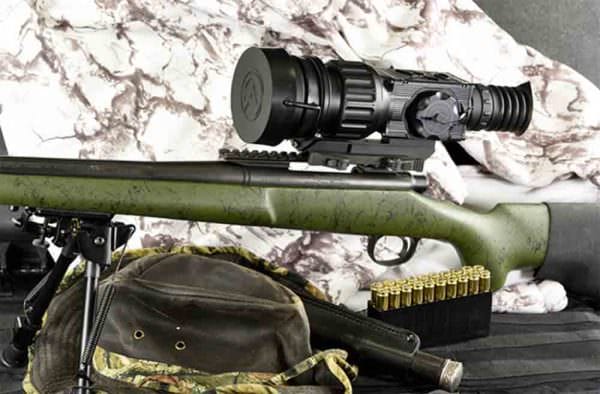

Sitting at the kitchen table, you are now faced with an opened box and a shiny new thermal sight – something that only a few years ago was top-secret military technology. You unpack a couple of strange-looking steel parts and several other mysterious gimcracks. Pausing, you take a deep breath and mentally ask that all-important question: now what?
The first order of business is getting that sight firmly affixed to the top of your rifle, but because thermal sights are still relatively new outside of the armed forces, there aren’t too many people available to help set up your new gear. Read on and we’ll try to close that knowledge gap so you better understand the mounting options available to you. With a bit of thought and planning, you’ll soon be outside and sending rounds downrange.
Currently, nearly all thermal sights utilize a quick-detachable mounting system that is designed to interface with either a standard Weaver or Picatinny (MIL-STD-1913) rail. The incorporation of a quick-detach base allows flexibility in mission planning, as your new investment could be used as handheld thermal imager in addition to its primary role as a weapon sight. A rail mount is the way to go if you want such ability.
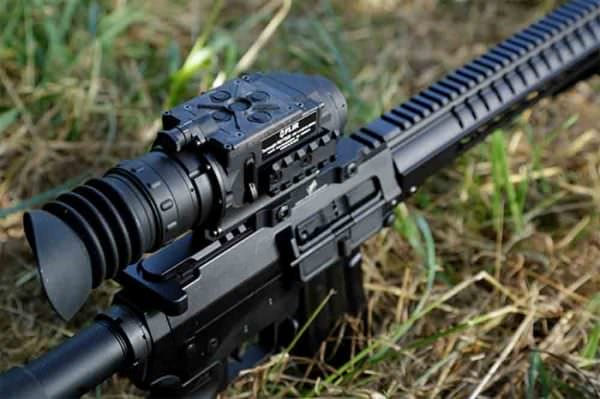
There are two primary types of thermal weapon sights: those designed as the primary, stand-alone targeting device and forward-mounted thermal-imagers intended to augment existing day sights.
Primary Thermal Imaging Optics
Primary thermal imaging optics will have an electronically adjustable reticle in the image field, just like a standard telescopic sight, though most incorporate a variety of user-selectable indicators ranging from standard crosshairs to Mil-Dot and ranging types. Forward-mount thermal sights may not have a reticle. If they do, it is usually switched off so it doesn’t confuse the shooter looking through the daytime optic.
While primary thermal targeting systems are highly accurate, there is potential for a point-of-impact shift anytime the optic is moved on and off a weapon. With a well-made mount this error is nearly imperceptible, especially in close to medium-range engagements, but in tactical mission, any potential shift raises concern for the precision marksman.
Forward-Mount Thermal Imager
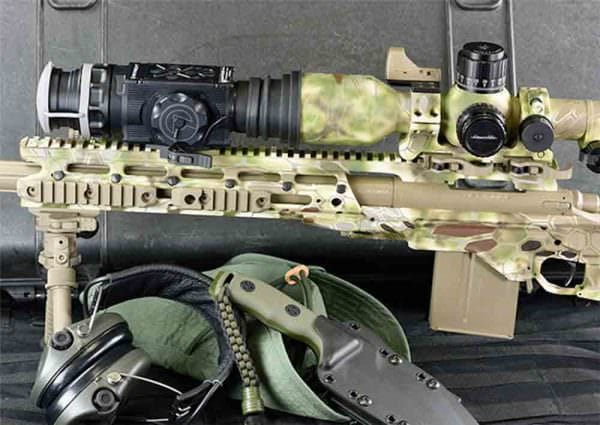
There is no such concern with a forward-mount thermal imager. Since these utilize the reticle in the daytime optic for aiming, there is no change in the point of impact when introducing the thermal-imager into the visual chain. Of course, each weapon system is different and needs to be tested extensively prior to critical use. For the most part, however, a forward-mount thermal imager is a simple matter of “use it when you need it.”
Of course, either type of system can be permanently mounted on the weapon to remove any doubt and leverage the 24/7 benefits of thermal imaging, so weigh the pros and cons of fast detachment versus more permanent solutions before moving forward.
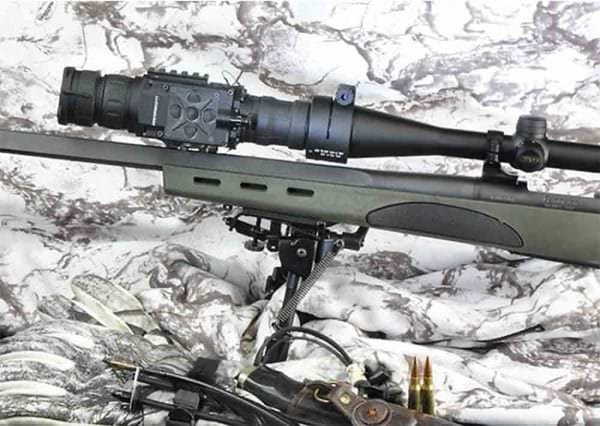
There are three primary ways to mount a thermal weapon sight. The first is by utilizing the stock rail that came on the weapon. The most commonly seen example is a “flat-top” AR-style rifle. You simply attach the sight to the top of the weapon, check for proper torque of all fasteners, correct eye relief, and then head to the range.
Many other weapons systems can utilize a rail, including bolt guns. There are several after-market manufacturers who build bolt-on long rails for popular bolt-action rifles. If you can’t find a bolt-on replacement for your particular gun, you can always employ the services of your friendly neighborhood gunsmith.
Forward-mount sights can be a little more challenging, because rail mounting requires rail real estate in front of the objective lens of the primary scope. An AR-platfom rifle is perfect if it has a fore-end that incorporates a full-length rail; such rifles are available from many major manufacturers. It is also a simple matter for an armorer to install an aftermarket full-rail fore-end.

Bolt guns can also have a longer rail installed to accommodate a forward-mount thermal imager, but many users opt for a separate, smaller forward rail on the barrel. It’s also possible to install a mount that attaches to the stock fore end and skirts the barrel without touching it. Any of these types of installations require the services of a qualified gunsmith.
A DIY option is to go with a proprietary forward-mount like the FSRS (Front Scope Rail System) from Armasight by FLIR. This mounts on an existing rail and provides scope rings plus an extended rail forward of the day optic. These are simple, well-engineered solutions and can work well if your weapon already has a short rail. Couplers are also available that are designed to attach a forward-mounted thermal imager directly to the objective ring of the daytime scope.
Thermal imaging technology is quickly being adopted by hog and predator hunters, nuisance animal control specialists and civilian law enforcement agencies because of the literal “sixth sense” it provides. Thermal scopes like those in FLIR’s new ThermoSight Pro Series epitomize thermal technology and excel as a primary weapon sight because they perform in any lighting conditions. Meanwhile, clip-ons add powerful thermal capability to virtually any platform employing a daytime optic. Mounting these optics is a simple matter and shouldn’t stop any shooter from experiencing their benefits.
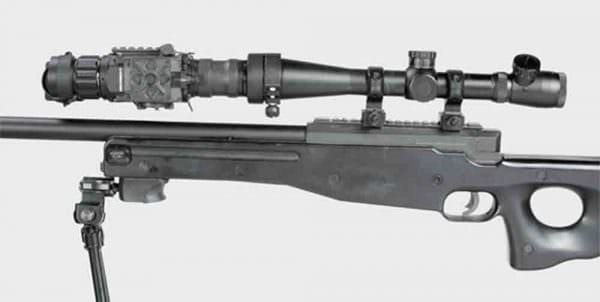
About FLIR Systems
FLIR Systems, Inc. is a world leader in the design, manufacture, and marketing of sensor systems that enhance perception and awareness. FLIR’s advanced systems and components are used for a wide variety of thermal imaging, situational awareness, and security applications, including airborne and ground-based surveillance, condition monitoring, navigation, recreation, research and development, manufacturing process control, search and rescue, drug interdiction, transportation safety, border and maritime patrol, environmental monitoring, and chemical, biological, radiological, nuclear, and explosives (CBRNE) threat detection. For more information, visit FLIR’s web site at www.FLIR.com.
Distributed by Traditions Media
Traditions Media, LLC is a fishing, hunting, tactical and shooting-sports marketing group, uniquely specialized in public relations, media communications, influencer marketing, social media and media buying. Our partners include Ameristep, Aqua-Vu, Avian-X, BUFF USA, Custom Jigs & Spins, Evolved, Fin-Wing, FISKAS, Flextone, FLIR OTS, FLIR Marine, Frabill, Halo, Old Town Canoes & Kayaks, Ocean Kayak, Plano, Plano Tactical, Raymarine, ScentLok, Seaguar, St. Croix Rod, Tenzing Outdoors, Tenzing Tactical, Wildgame Innovations and Zink Calls. Learn more at www.traditionsmedia.com.

Well crap. They didn’t say how to zero the sight. All the stuff the author covered was basic stuff anybody knows. Master of the obvious.
How does one sight in the weapon with the thermal sight? Do you need a heat source as the target? If so, what do you use? Where do you get it?
For a target I cut a hole in cardboard and place a hand or toe warmer behind the cardboard. For zeroing it will either be basically identical to a conventional scope, or if you have a more advanced unit there are digital controls that you can adjust with buttons or knobs on the unit.